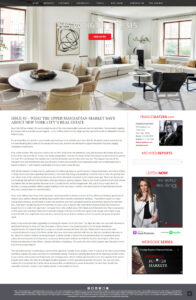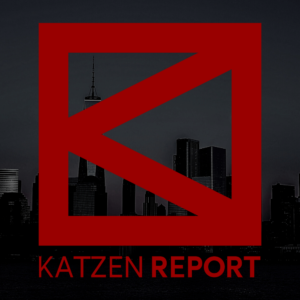Now that fall has started, it’s worth analyzing one of the most memorable summers ever in real estate. I’m personally capping the season with a deal that we just signed — a $27 million deal for a very large two-bed, two-bath condo on Billionaire’s Row in Midtown East.
It’s an incredible unit, and the most valuable two-bedroom to be sold this year. Now that it’s all signed, sealed and delivered, I’ve been thinking about what all this means for New York, and how the demand for Upper Manhattan has been surging compared to downtown.
First, some context. This summer is such a far cry from 2020, when the pandemic, riots, and business shutdowns all put the future of the city up in the air. From a real estate perspective, it was by no means certain that people would continue to want to live here. For now, though, the markets have calmed and buyers seem to like what they see. This August was one of the strongest ever, and compared to last year, all types of units across nearly every single price point saw a meaningful rise in signed contracts — with condos in particular moving at nearly twice the rate.
With all this demand, it’s important to understand why there has been so much interest in Upper Manhattan, and what’s driving it. Many clients have been spending time indoors more than their liking, and proximity to Central Park is more of a priority than ever. Much more of the existing inventory has also been renovated, compared to the market years ago. These are classic, pre-war buildings that will never be replicated, offering oversized, gracious layouts. They’re also close to great schools and cultural institutions like the Metropolitan Museum of Art, Lincoln Center, and the Guggenheim. Not only is this a major draw for families, or young upwardly-mobile couples looking to start one soon, it makes it an ideal location for international clientele who want a pied-à-terre in a central location.
Since we’re talking about New York real estate, value proposition is always a factor, and my clients are finding a great deal of relative value uptown. Broadly speaking, buyers prefer more recently constructed buildings. They tend to require no major capital improvements, are delivered in triple mint condition, and have unrivaled amenities and services beyond the standard fare. Downtown, despite having more inventory of newer units to absorb, still commands between $3,000 and $4,000 per square foot for a triple mint apartment. Compare that to the market above 59th Street and Billionaire’s row. New construction on the Upper East and West Sides have a blended average of $2,300 to $2,400 per square foot, though you’re likely to pay around $2,060. It’s a significant discount, but a narrowing one as buyers continue to look for quality and gauge long-term value.
Many of my clients are either upgrading or entering the market for the first time. The latter are often the ones with the least to spend and the most to lose, and they have been a driving force in the recent popularity for the Upper Manhattan neighborhoods. I’m hopeful that this is a sign of a durable recovery for New York City. While clients were at one point concerned about the surge of the Delta variant, they have since been satisfied with how the city has contained outbreaks so far. Since Eric Adams’ election as the next Mayor is all but certain, it seems the next administration will emphasize public safety and the concerns of the business community. Restaurants and bars are filled to the brim most nights of the week. People are returning to their offices. Subway ridership is increasing. This week, the city’s school system was fully open for the first time since last March!
The real estate market is reflecting so much of this optimism. Despite some outliers, much of what’s up for sale is priced fairly, and this is exactly why sales have been so consistently strong. People are realizing that much of the repricing has been in the luxury market, and coupled with historically low mortgage rates, they’re finding opportunities to not only upgrade their homes and get more space, but often at a cheaper monthly payment. Is there aspirational pricing? Of course. You see it in every market. But most prices don’t strike me as unreasonable considering the overall enthusiasm for New York. Should this rationality continue, I expect a very healthy market in the quarters to come.

